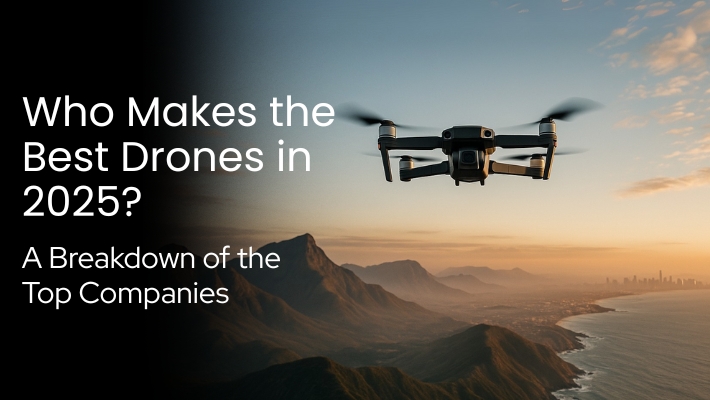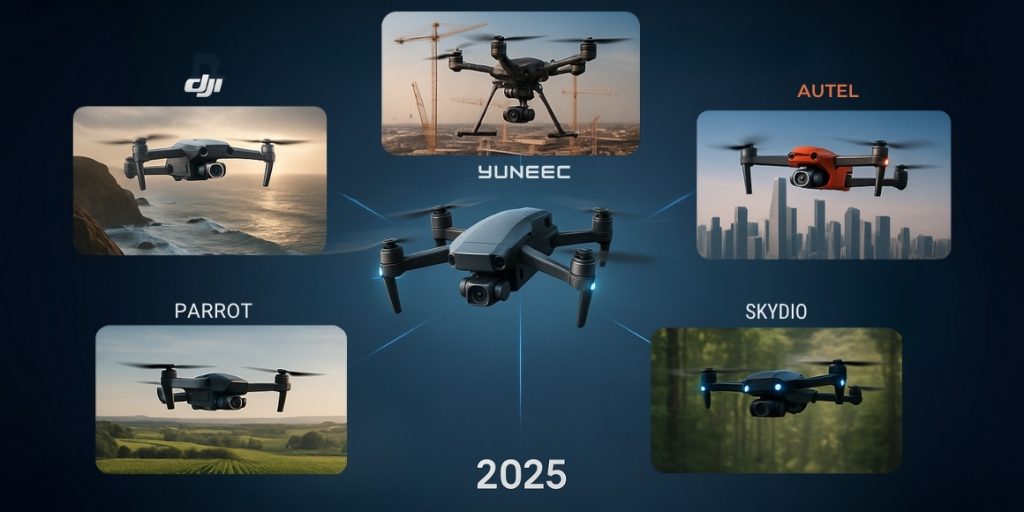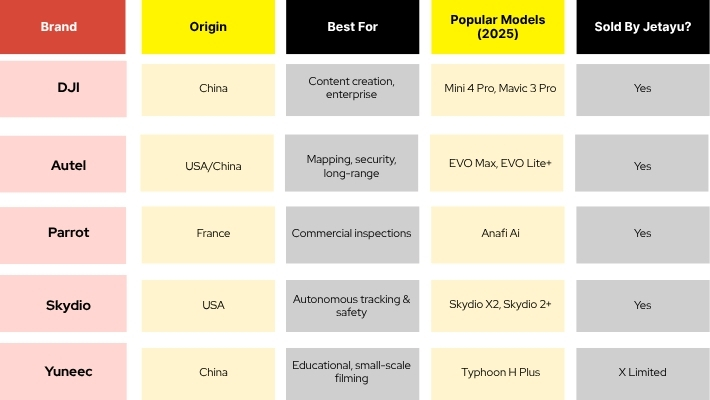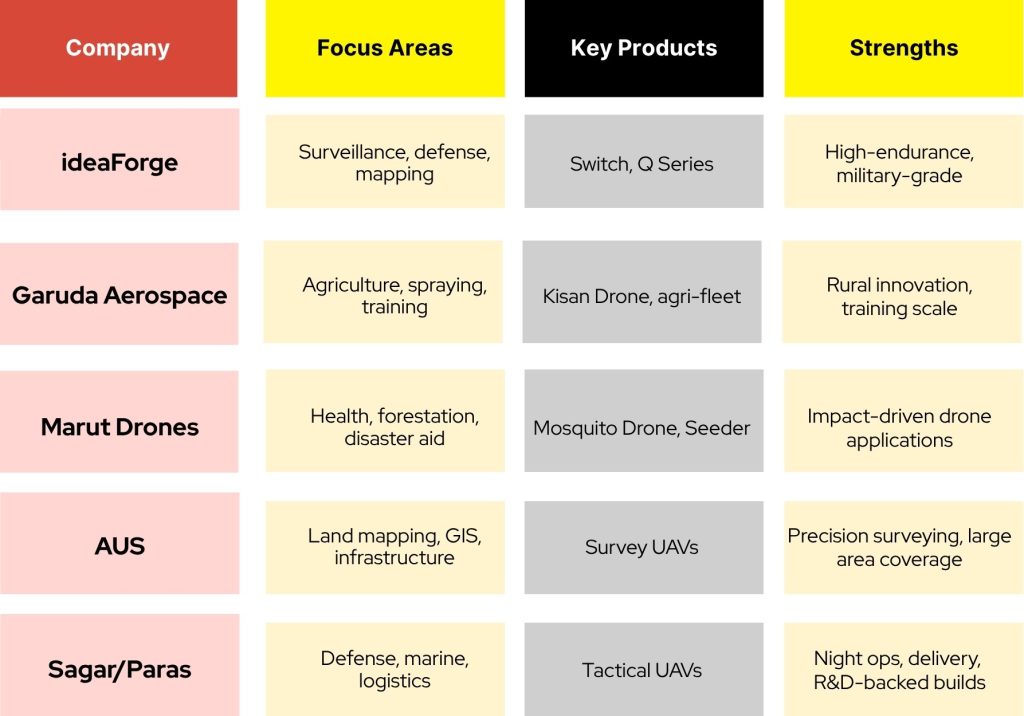Thinking of Upgrading? DJI Air 3S vs Mavic 4 Pro – Real Differences Worth Your Money
In the fast-evolving world of drones, upgrading can feel like a high-stakes decision. If you’re stuck between the DJI Air 3S and the brand-new DJI Mavic 4 Pro, you’re not alone. Both are top-tier drones, packed with intelligent features, powerful cameras, and sleek designs that appeal to everyone from content creators to industrial professionals.
But which one is actually better for you?
Is the Mavic 4 Pro just a high-priced upgrade, or does it truly bring game-changing value over the Air 3S?
In this detailed comparison, we’ll break down:
- Core differences in specs, performance, and features
- Real-world use cases like photography, mapping, and filmmaking
- Which drone offers the best value for your money
And if you’re ready to make your choice, both models are available at Jetayu Gadgets, an authorized reseller of DJI, Autel, Skydio, and more so you can buy with confidence.
Let’s dive in.
Quick Specs Comparison: DJI Air 3S vs DJI Mavic 4 Pro
Before diving deep into use cases or flight performance, here’s a side-by-side comparison of the core technical specs that matter most to buyers.
DJI Mavic 4 Pro vs DJI Air 3S: Spec Overview
| Feature | DJI Air 3S | DJI Mavic 4 Pro |
|---|---|---|
| Camera Sensor | Dual 1/1.3-inch CMOS (Wide + Tele) | 4/3-inch Hasselblad CMOS + 1/1.3 Tele |
| Max Video Resolution | 4K at 100fps | 5.1K at 60fps, 4K at 120fps |
| Photo Resolution | 48MP (Wide and Tele) | 20MP (Hasselblad), 48MP (Tele) |
| Flight Time | Up to 46 minutes | Up to 43 minutes |
| Transmission Range | 20 km (O4 system) | 24 km (O4+ system) |
| Obstacle Avoidance | Omnidirectional | Omnidirectional with upgraded AI sensing |
| Weight | ~720 grams | ~960 grams |
| Internal Storage | None | 16GB onboard + microSD |
| Gimbal Control | 3-axis mechanical | 3-axis mechanical |
| Intelligent Flight Modes | FocusTrack, Waypoints, MasterShots | ActiveTrack 6.0, Cruise Control, Night Mode |
Key Takeaway:
If you’re into high-end video, commercial shoots, or advanced editing, the Mavic 4 Pro stands tall. But for daily creators, travel vloggers, or anyone who values agility, the Air 3S still packs more than enough punch.
📌 Related read: If you’re wondering what makes DJI’s mid-range drones so appealing, check out our comparison of the DJI Mini 3 vs. Mini 4 Pro—it breaks down what’s truly essential for beginners vs. pros.
Camera & Imaging Capabilities: Who Wins for Photography and Video?
When choosing a drone, your camera needs are often the biggest deciding factor. Both the DJI Air 3S and Mavic 4 Pro deliver serious imaging power—but there are key differences that matter depending on your goals.
DJI Air 3S: Dual-Camera Versatility
- Features two 1/1.3-inch CMOS sensors: one wide-angle and one 3x telephoto
- Shoots 48MP stills on both lenses, giving sharp detail across focal lengths
- Records up to 4K at 100fps, ideal for smooth slow-motion
- Strong low-light capability with advanced night video modes
- Perfect for travel vloggers, solo creators, and agile storytelling
DJI Mavic 4 Pro: Pro-Level Imaging
- Equipped with a 4/3-inch Hasselblad CMOS sensor on the main camera
- Secondary telephoto sensor allows 3x optical zoom with full manual control
- Shoots 5.1K video at 60fps, 4K at 120fps, and 10-bit D-Log M
- Superior dynamic range, low-light performance, and color depth
- Built for cinematic shooting, commercial videos, and professional-grade edits
Comparison Snapshot
| Feature | DJI Air 3S | DJI Mavic 4 Pro |
|---|---|---|
| Main Sensor | 1/1.3″ CMOS | 4/3″ Hasselblad CMOS |
| Zoom Lens | 3x Telephoto (1/1.3″) | 3x Telephoto (1/1.3″) |
| Max Video Resolution | 4K at 100fps | 5.1K at 60fps, 4K at 120fps |
| Color Profiles | D-Log M, 10-bit | D-Log M, HLG, ProRes |
| Night Performance | Good | Excellent |
Verdict:
If you’re looking to create cinematic content or work on client shoots, the Mavic 4 Pro is a clear winner. But if you’re a solo YouTuber or social media creator, the Air 3S still offers exceptional value and flexibility, especially with its dual-camera setup.
If content creation is your goal, you might want to explore:
Is Buying a Drone Enough to Start My Journey as a Content Creator?
This guide walks you through everything else you’ll need to build your brand from day one.
Flight Performance & Handling – Which One Feels Better in the Air?
A powerful drone is only as good as how it flies. Here’s how the DJI Air 3S and Mavic 4 Pro stack up when it comes to control, stability, obstacle sensing, and battery life.
DJI Air 3S: Nimble, Lightweight, Reliable
- Weighs around 720 grams, making it easier to launch, land, and maneuver
- Offers up to 46 minutes of flight time under ideal conditions
- Supports omnidirectional obstacle avoidance with APAS 5.0
- Smooth and beginner-friendly flight experience with FocusTrack, Waypoints, and Smart Return-to-Home
- Ideal for quick deployments, travel shots, or when portability matters most
DJI Mavic 4 Pro: Precision Meets Power
- Slightly heavier at around 960 grams, but better wind resistance and stability
- Flight time hovers around 43 minutes, but with upgraded battery intelligence
- Comes with enhanced obstacle detection with AI path planning a major upgrade for advanced navigation
- Features Cruise Control, ActiveTrack 6.0, and Advanced Pilot Assistance System (APAS) 6.0
- Best suited for high-stakes shooting environments or autonomous missions in complex areas
Key Flight Differences
| Feature | DJI Air 3S | DJI Mavic 4 Pro |
|---|---|---|
| Flight Time | Up to 46 min | Up to 43 min |
| Wind Resistance | Level 5 | Level 6 |
| Obstacle Avoidance | Omnidirectional (APAS 5.0) | Omnidirectional with AI (APAS 6.0) |
| Navigation Intelligence | Standard | Advanced AI with predictive pathing |
| Portability | Higher | Moderate |
Verdict:
The Air 3S feels more agile and is better for on-the-go creators or casual users. The Mavic 4 Pro offers superior control and smarter obstacle management—making it the choice for commercial drone pilots, surveyors, or creators filming in complex terrains.
New to drone regulations? Read:
Can I Fly My Drone Freely or Do I Need a License? Understand the Rules a practical guide for drone flyers in India.
Intelligent Features That Actually Matter
Both drones are packed with smart features, but the value lies in how well these tools work in real-world situations whether you’re tracking a moving subject, flying in tight spaces, or automating cinematic shots.
DJI Air 3S: Smart Tools for Everyday Creators
- MasterShots: Automatically creates dynamic cinematic edits using pre-set maneuvers
- FocusTrack Suite: Includes ActiveTrack, Spotlight, and Point of Interest
- Waypoint Flights: Plan complex routes and reuse them anytime
- SmartPhoto 3.0: AI-based auto scene recognition for optimized stills
- O4 Transmission: Reliable 20 km range with stable 1080p live feed
Best for travel vloggers, solo YouTubers, and everyday shooters who want results with minimal manual control.
DJI Mavic 4 Pro: Intelligent Tools for Professionals
- ActiveTrack 6.0: Subject tracking with terrain awareness and predictive motion
- Night Mode: Clean low-light shooting without manual ISO tweaking
- Cruise Control: Maintains speed for long cinematic sequences
- Smart Return-to-Home: Auto path planning with obstacle bypassing
- O4+ Transmission System: Range up to 24 km with ultra-low latency feed
Built for surveyors, filmmakers, and advanced creators who demand automation with accuracy.
Key Feature Comparison
| Feature | DJI Air 3S | DJI Mavic 4 Pro |
|---|---|---|
| Intelligent Flight Modes | MasterShots, Waypoints, FocusTrack | Cruise Control, Night Mode, Waypoints |
| Subject Tracking | ActiveTrack 5.0 | ActiveTrack 6.0 with AI learning |
| Transmission Range | 20 km (O4) | 24 km (O4+) |
| App Integration | DJI Fly App | DJI Fly App with expanded controls |
| Automation Level | Beginner to intermediate | Advanced |
Verdict:
The Air 3S gets you 90% of the smart functionality you’ll need if your focus is easy, polished, creative content. But the Mavic 4 Pro pushes automation to a professional level, with smarter tracking, smoother cinematic sequences, and robust night shooting tools.
Tip for thoughtful gifting: If you’re buying a drone for someone who’s into photography or videography, you’ll find inspiration in this guide:
Is Your Partner a Photographer or Videographer? Surprise Them With the Perfect Drone Gift
Who Should Buy Which Drone? A Breakdown by User Type
If you’re torn between the DJI Air 3S and the DJI Mavic 4 Pro, the real question isn’t just “which is better?” but “which is better for you?”
Here’s a practical breakdown based on who you are and what you need the drone to do.
Choose the DJI Air 3S If You Are:
- A travel vlogger or YouTuber looking for portability and quick setup
- A solo content creator who needs excellent visuals with smart automation
- Someone who wants high-end features without the flagship price
- New to drones but not a total beginner you want to grow with your drone
Why it works:
You get pro-level features like 48MP imaging, dual cameras, and intelligent flight without jumping into ultra-premium pricing. It’s flexible, smart, and still shoots content good enough for client work or social platforms.
New to drones or shopping on a budget? You might want to check:
Buying a Drone for the First Time? The DJI Mini 4 Pro Makes It Easy to Fall in Love with Flying
Choose the DJI Mavic 4 Pro If You Are:
- A professional videographer, surveyor, or commercial drone pilot
- Shooting in low light, fast-moving environments, or complex terrains
- Handling client work that requires cinematic quality and full manual controls
- Willing to invest in top-tier tools to unlock high performance and pro results
Why it works:
From its 4/3 Hasselblad sensor to advanced tracking and night modes, the Mavic 4 Pro gives you full control over the shot. It’s not just smart it’s reliable in professional scenarios where precision matters.
If you’re thinking long-term and need to work in tough environments, also read:
Why Builders Now Trust Drones More Than Ground Teams for Site Surveys a look at how drones like Mavic 4 Pro are changing on-site operations.
Pricing & Value – Is the Mavic 4 Pro Worth the Extra Money?
Both the DJI Air 3S and Mavic 4 Pro deliver excellent performance, but there’s a noticeable gap in their pricing. Here’s what you need to know before deciding where your money is better spent.
Current Pricing (2025 Estimates)
| Model | Base Price (INR) | Fly More Combo (INR) | Available at Jetayu Gadgets |
|---|---|---|---|
| DJI Air 3S | ₹1.15 – 1.35 lakh | ₹1.55 – 1.75 lakh | Yes |
| DJI Mavic 4 Pro | ₹2.25 – 2.45 lakh | ₹2.85 – 3.10 lakh | Yes |
Note: Prices may vary depending on accessories, combo options, and seasonal offers at Jetayu Gadgets.
Cost vs. Features Analysis
| Consideration | DJI Air 3S | DJI Mavic 4 Pro |
|---|---|---|
| Portability | Better for travel | Heavier but stable |
| Imaging Power | Excellent for content creators | Ideal for pro-level video/photo |
| Intelligent Tools | Creator-focused automation | Professional-grade AI tools |
| Battery Life | Slightly longer | High efficiency under load |
| Regulatory Weight Limit | Under 2kg (fewer restrictions) | Just under limits for commercial use |
So, is it worth paying more for the Mavic 4 Pro?
- Yes, if you’re earning through drones or need top-tier footage and AI features that automate high-end shooting tasks
- No, if you’re a solo creator or business just getting started the Air 3S already over-delivers for its price
If you’re planning to scale into drone-based work or commercial flying, check this guide:
Thinking of Buying a Commercial Drone? Here’s What You Need to Know First including rules, return on investment, and long-term usability.
Use Cases – Where Each Drone Performs Best
Both drones are powerful, but their strengths show up differently depending on the task. Whether you’re filming a wedding, documenting a trek, or surveying land, here’s where each drone fits best.
DJI Air 3S: The Versatile Creator’s Choice
Best Use Cases:
- Travel Vlogging: Lightweight build and dual cameras make it easy to shoot wide landscapes and zoomed-in details during hikes or road trips.
- Social Media Content: Vertical shooting modes and auto-editing features help solo creators produce platform-ready footage fast.
- Real Estate Overviews: Ideal for capturing residential exteriors, layout flyovers, and quick property videos.
- Family Events & Weddings: Silent and smooth enough for capturing large outdoor gatherings.
- YouTube Content: Built-in MasterShots and FocusTrack simplify single-operator production.
Example in Action:
If you’re vlogging your solo adventure, the Air 3S gives you cinematic shots without a bulky setup. You can read more in our post:
Vlogging Your Solo Adventure? Here’s What Only a Drone Can Film
DJI Mavic 4 Pro: The Pro’s Precision Tool
Best Use Cases:
- Commercial Videography: From branded content to music videos, its high dynamic range and color depth deliver edit-ready footage.
- Construction & Mapping: With precise tracking and long flight stability, it’s suited for orthomosaic mapping and visual surveys.
- Security & Surveillance: AI-powered tracking and longer range help cover complex zones with minimal manual effort.
- Documentaries & Cinematic Projects: Full-frame visuals, telephoto detailing, and advanced AI features make it a filmmaker’s favorite.
- Search & Rescue Support: Exceptional image clarity and path planning features are valuable in emergency response scenarios.
Example in Action:
Security teams and local governments are increasingly turning to drones. A recent example is the Gujarat Police’s drone program aimed at safer cities using models like the Mavic 4 Pro. Read about it here:
Gujarat Police Cleared to Launch High-Tech Drone Program for Safer Cities
Buying Guide – How to Choose Between the Air 3S and Mavic 4 Pro
Choosing between two premium DJI drones isn’t just about price or specs—it’s about purpose, experience level, and future plans. Here’s how to simplify your decision.
1. Define Your Purpose
Ask yourself:
- Are you flying for fun, content, or commercial use?
- Do you need cinematic control or automated ease?
- Are you traveling light, or flying in high-stakes environments?
Go with the DJI Air 3S if:
- You prioritize value for money and want excellent camera quality
- You need a travel-friendly, dual-lens drone
- You’re into YouTube, reels, vlogging, or casual client work
Choose the DJI Mavic 4 Pro if:
- You need professional tools for commercial projects
- You work in filmmaking, mapping, inspections, or security
- You’re planning to scale your drone-based work or business
2. Consider Long-Term Use
- Will your work evolve into higher-end videography or commercial operations?
- Do you plan to apply for drone certifications or government tenders?
For insights into drone licenses and certifications in India, don’t miss:
How to Get a Commercial Drone License in India in 2025 Guide
3. Check the Seller: Jetayu Gadgets
Both drones are available at Jetayu Gadgets, an authorized seller offering:
- Latest DJI models with full warranty and verified accessories
- Expert support for creators, farmers, construction firms, and institutions
- Transparent pricing and combo deals tailored to different users
Whether you’re buying your first drone or upgrading to pro gear, Jetayu ensures you get authentic drones with local support something that matters in the long run.
If you’ve recently purchased a drone, here’s a tip:
Bought a Drone Recently? Here’s How to Verify If It’s Not Refurbished
FAQs – DJI Mavic 4 Pro vs DJI Air 3S
1. Which drone is better for beginners?
The DJI Air 3S is more beginner-friendly thanks to its lighter weight, simplified controls, and intelligent flight modes. It’s easier to fly right out of the box and less intimidating for first-time users.
2. Can I use either drone for professional video shoots?
Yes, both can handle professional tasks, but the Mavic 4 Pro is designed specifically for cinematic, commercial-grade shoots. It offers better dynamic range, more advanced tracking, and support for ProRes formats.
3. What’s the difference in camera quality?
The Air 3S uses dual 1/1.3-inch sensors, offering flexibility with wide and telephoto shots. The Mavic 4 Pro features a larger 4/3-inch Hasselblad sensor that captures more detail, better color depth, and performs exceptionally in low light.
4. Do these drones need special licenses to fly in India?
If you’re flying recreationally and the drone weighs under 2kg, you typically don’t need a license. For commercial use or flights in restricted areas, a commercial drone license and additional permissions are required.
5. Can I upgrade from the Air 3S to the Mavic 4 Pro later?
Absolutely. Many users start with the Air 3S and move up once their needs or income from drone work increases. The Mavic 4 Pro is a future-proof option with advanced features that justify the upgrade when you’re ready.




